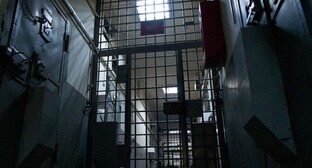19 April 2003, 03:28
Geographic position and natural resources of Republic Dagestan
The Republic Dagestan is located in the eastern part of North Caucasia. Internal administrative borders: in the north - with Kalmykia, in the northwest - with Stavropol Territory, in the west - with Chechnya. External state borders - with Georgia and Azerbaijan; in the east the territory is washed with the Caspian Sea, which gives the republic access to Kazakhstan, Turkmenia and Iran.
After the collapse of the USSR Dagestan became a border republic, however the delimitation of borders with Georgia and Azerbaijan has not been performed yet. Administrative border with Chechnya during the war in the adjacent republic (1994 - 1996 ) and in particular after its completion became the "front line" between Chechen military groups, on the one hand, and Russian internal troops and Dagestan militia, on the other hand.
Capital Makhachkala - large warm-water military and trade seaport on the Caspian Sea. Distance interval from Makhachkala to Moscow - 2166 km. Dagestan is the largest republic by territory and population of North Caucasia. It is the southernmost region of Russia that has strategic importance.
By relief the territory is divided into two parts: southern and northern. Southern Dagestan is a highland area, its territory is occupied with mountain ranges of the Large Caucasus (altitude up to 4480 m above sea level), and the northern regions of the republic are lowlands - Nogaiskaya steppe and Tersko-Sulakskaya lowland. The climate on the plain is continental, warm and dry, with average temperatures in January -3.6?C, and in July +23.5?C. Annual precipitation is low, 300 - 400 mm. The seaside area, along the Caspian Sea, has milder and more humid climate, in the mountains it depends on the altitude. The main rivers of Dagestan - Terek (in its lower part), Sulak, Samur and Kuma - are used for irrigation and water-power engineering. Large parts of the pains are occupied by fertile chernozem and dark chestnut soils favourable for agriculture.
More than 60% of lands are located the mountain slopes. Valuable wood species - oak, beech, hornbeam - grow in the mountains. The forest area is small - only 8% of the territory.
Agricultural lands in Dagestan occupy 66% of the total area (3.37 million ha), including pasture lands - 70% (2.6 million ha) and arable land - only 15% (527 thousand ha). The rest is occupied by hayfields, perennial plantations. The share of plain lands includes 46% of all farmland, and more than 60% of natural fodder lands for the autumn and winter keeping of sheep droved from mountain regions. The foothill and mountain area is more than 3 million ha. For one inhabitant of Dagestan nowadays there are 9.32 ha of arable lands, which is three times less than on the average in Russia.
In general shortage of convenient lands (not only agricultural lands) is the most important problem of Dagestan. Due to intensive migration of population from highland regions to the lowland agricultural area there are almost no free lots left. It often causes disputes and even conflicts between the inhabitants Caspian lowland and mountain migrants.
An important resource of Dagestan - the Caspian Sea - is the greatest of closed seas in the world. The coastline within the republic stretches for 360 km - from the mouth of Kuma to the southern borders with Azerbaijan. The shelf area is actively used for industrial fishery. Caspian salmon is recognised as the best in the world. Five sturgeon species are found here: sturgeon, stellate sturgeon, hausen, hackleback and sterlet. The sea gives 9/10 of the world production of caviar.
The natural climate conditions of Dagestan are extremely favourable for gardening, wine growing, vegetable-growing, as well as for development of resorts, recreation and tourism.
The main mineral resources: oil, gas, gas condensate, various mineral building materials (quartz sand, clay, gypsum, marl, limestone, dolomite, etc.), rock crystal, facing stone.
Among ore mineral resources that do not have industrial importance yet, the copper pyrite field in Kizil-Dere (in the south, in the mountains) is explored with reserves of copper of more than 1 million tons, zinc - 25 thousand tons, sulphur - 14 million tons. The field of celestine "Blue Rocks" (celestine is the mineral of strontium) was explored in Sergokalisky region. The reserves of strontium oxide in the field are estimated as 94 thousand tons.
There are reserves of moulding sand products for metallurgy of 57 million tons in Ekibulakskoye field. The sand products are also suitable for glass production.
It should be stressed that in North Caucasia Dagestan is the region with the least developed sources of mineral raw materials. Until now the republic imports different building materials and other types of products that could be manufactured in the republic from own raw materials, but in case of better development of available fields. This is, however, difficult to achieve since many fields are located in the highland regions and far away from the main consumers. Oil is of the greatest industrial importance. Today the republic annually produces about 360 thousand tons of oil (together with gas condensate) and 670 million cubic metres of gas (1998). The share of Dagestan in the Russian oil production is 0.12%. Oil production is reduced every year, many wells are abandoned due to their exhaustion.
The large prospects in development of gas and oil industry are connected with the commercial reserves of oil and gas found in the waters of the Caspian Sea and in the 10-mile area of the Caspian Sea. The forecasts concerning oil and gas production in the plain and foothill areas of Dagestan are also quite optimistic. The exploring of the largest in North Caucasia Dimitrovskoye gas field is now conducted. Today about 70% of gas consumed in Dagestan is provided from the internal resources, and during the last years its production has increased. It is planned that by 2005 Dagestan Republic will have self-sufficient internal gas supply.
Oil resources of the shelf area are of particular importance: at the modern stage of geologic research the total reserves of oil in Dagestan shelf of the Caspian Sea by different estimations constitute from 130 to 500 million tons. On the basis of a bidding for the right of mining in the territory of the 10-mile shelf area in Dagestan Republic the winner companies were determined that received this right for 25 years: "Geotermneftegaz" and consortium "Caspoil" that includes joint-stock company "Dagneft", Canadian company "KonArgo" and ZAO "Caspiy-2".
The reserves of water power resources Dagestan occupies the first place in North Caucasia, but the use of this potential is only about 20%.
Of special value are recreational resources of the region. Numerous mineral springs and muds in combination with healing climate, fine landscape and warm sea create excellent conditions for recreation and treatment. The most famous resorts: health resort "Talgi" located in a mountain valley with hydrogen sulphide medical springs; resort "Caspiy" where the diseases of movement organs and nervous system are treated with the help of iodine-bromine brines from a local spring; resort "Kayakent" specialising in treatment of diseases of movement organs and dermatological diseases with the help of medical peat mud from a unique local lake.
The republic has numerous reserves of geothermal waters, however they are not developed: this resource potential is used only for one quarter. Thermal waters received from the depth of 1 - 1.5 km serve today for heating and hot water supply in Makhachkala, Izberbash, Kizliar and a number of villages.
Source: I.G. Kosikov, L.S. Kosikova. North Caucasia: Social and Economic Reference Book




